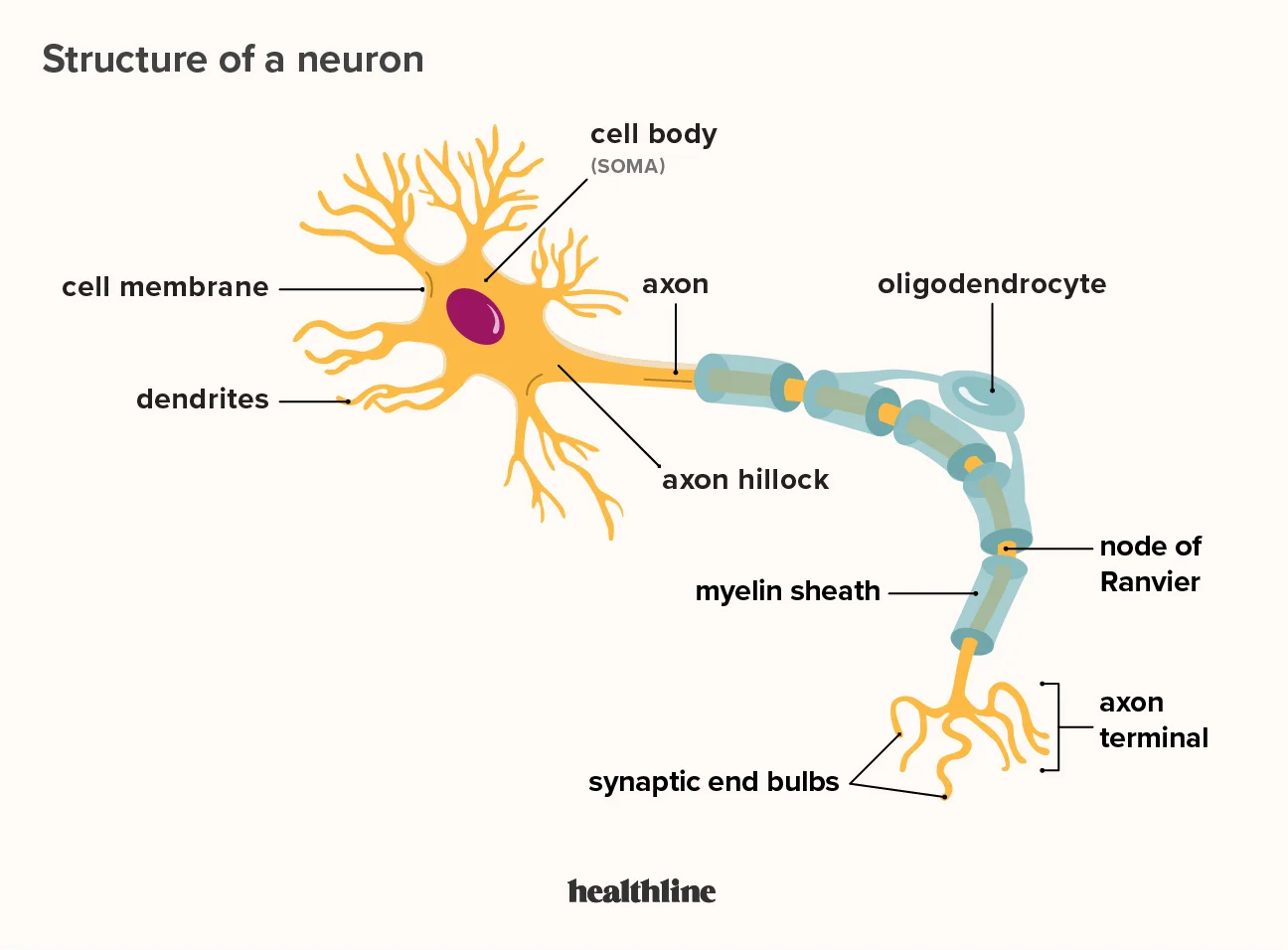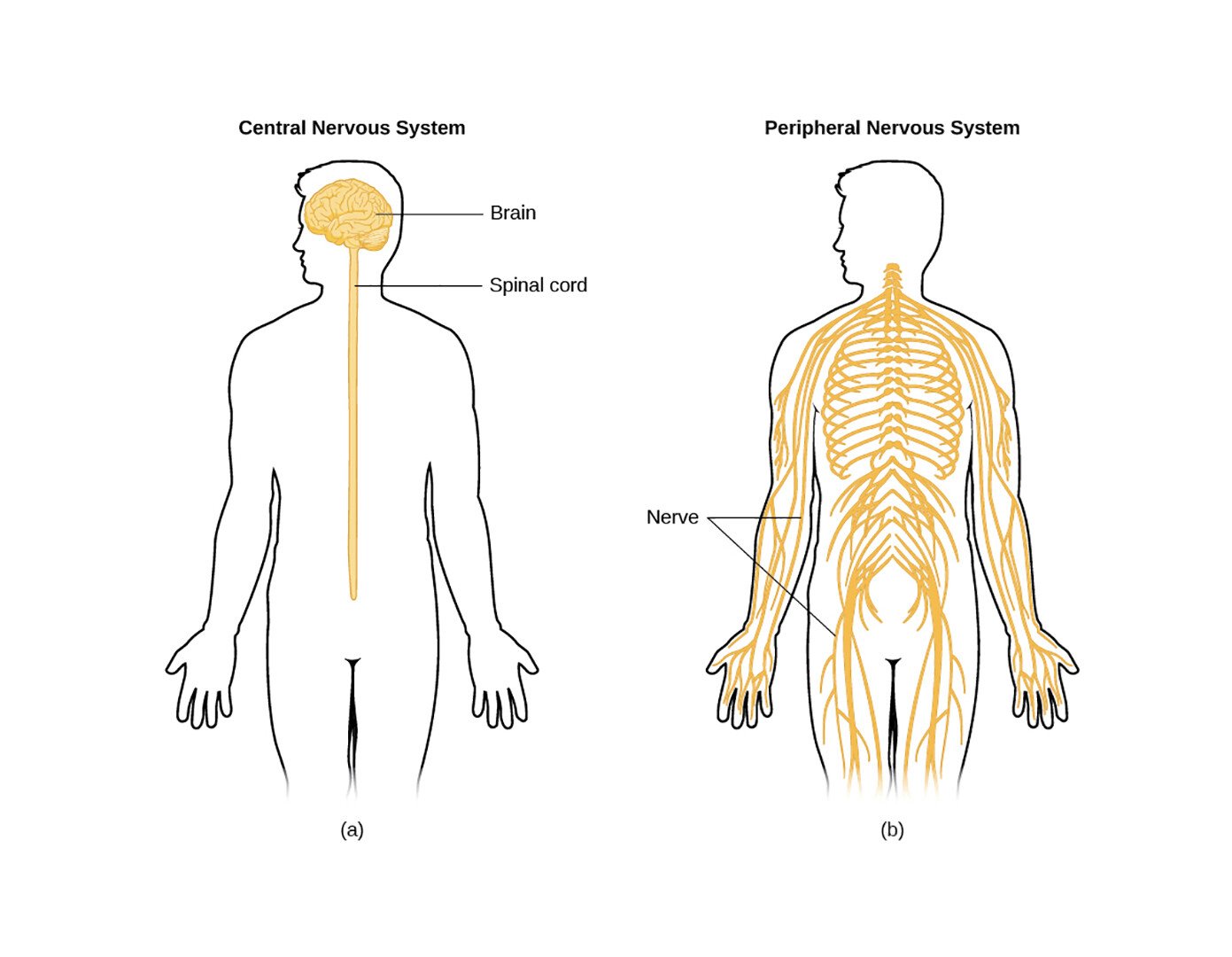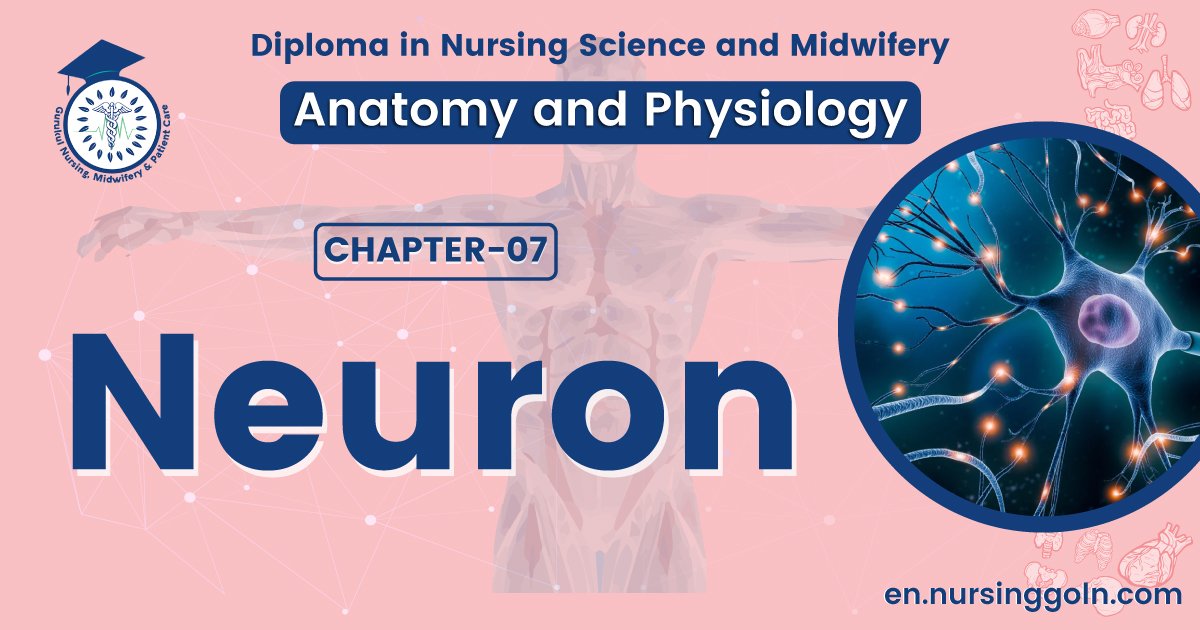Concept about Neuron-The course is designed for the basic understanding of anatomical structures and physiological functions of human body, musculoskeletal system, digestive system, respiratory system; cardiovascular system; urinary system, endocrine system, reproductive system, nervous system, hematologic system, sensory organs, integumentary system, and immune system.The aim of the course is to acquire knowledge and skills regarding anatomy and physiology.

Concept about Neuron
Nervous tissue consists of two types of cells: neurons and neuroglia Neurons provide most of the unique functions of the nervous system, such as sensing, thinking. remembering, controlling muscle activity, and regulating glandular secretions. Neuroglia support nourish, and protect the neurons and maintain homeostasis in the interstitial fluid that bathes them.
Definition of neuron :-
Neurons or nerve cells are the structural and functional units of the nervous system
Parts of a Neuron
Most neurons have three parts:
1) A cell body.
2) Dendrites, and
3) An axon.
Axon & dendrite
- The cell body contains a nucleus surrounded by cytoplasm that includes typical organelles such as rough endoplasmic reticulum, lysosomes, mitochondria, and a Golgi complex. Two kinds of processes (extensions) emerge from the cell body of most neurons: multiple dendrites and a single axon.
- The dendrites (little trees) tare the receiving or input parts of a neuron. Usually, dendrites are short, tapering, and highly branched, forming a tree-shaped array of processes that emerge from the cell body.
- The second type of process, the axon, conducts nerve impulses toward another neuron, a muscle fiber, or a gland cell. An axon is a long, cylindrical projection that often joins the cell body at a coneshaped elevation called the axon hillock (small hill). Nerve impulses usually arise at the axon hillock and then travel along the axon. Some axons have side branches called axoncollaterals. The axon and axon collaterals end by dividing into many fine processes called axon terminals.
Classification of neuron:

A. Structural classification:-
Structurally, neurons are classified according to the number of processes extending from the cell body:
- Multipolar neurons: usually have several dendrites and one axon Most neuons in the brain and spinal cord are of this type.
- Bipolar neurons: have one main dendrite and one axon. They are found in the retina of the eye, in the inner ear, and in the olfactory (olfact to smell) area of the brain.
- Unipolar neurons; have dendrites and one axon that are fused together to form a continuous process that emerges from the cell body These neurons begin in the embryo as bipolar neurons. During development, the dendrites and axon fuse together and become a single process.
B. Functional classification :
Functionally, neurons are classified according to the direction in potential) is conveyed with respect to the CNS
- Sensory or afferent neurons either contain sensory receptors at their distal ends (dendrites) or are located just after sensory receptors that are separate cells. Once an appropriate stimulus activates a sensory receptor, the sensory neuron forms an action potential in its axon and the action potential is conveyed into the CNS through cranial or spinal nerves. Most sensory neurons are unipolar in structure.
- Motor or efferent neurons convey action potentials away from the CNS to effectors (muscles and glands) in the periphery (PNS) through cranial and spinal nerves Most motor neurons are multipolar in structure.
- Interneurons or association neurons are mainly located within the CNS between sensory and motor neurons Interneuronsintegrate (process) incoming sensory informationfrom sensory neurons and then elicit a motorresponse by activating the appropriate motor neurons Most interneurons are multipolar in structure.
C. According to the length of the axon:
1. Golgi type-l
2. Golgi type-II
D. According to position:
1. Upper motor neuron
2. Lower motor neuron
Functions:
Neurons regulate homeostasis mechanism by following way
- Receives and integrates stimuli from many sources.
- Translates stimuli into membrane potential.
- Transmit signals to other neuron and effectors organs.
- Release the neurotransmitters to target cells.

(Ref: J. TORTORA. 8 edition, P-241 Guyton and Hall, Textbook of Medical Physiology, 12″ ed)
Differences between axon and dendrite:
| Axon | Dendrite |
| 1. Always single in number | 1. May be single or multiple in number |
| 2. It arises from the nerve cell body (at axon hillock) | 2. It arises from any part of nerve cell body. |
| 3. Size. Long | 3. Size: Short |
| 4. Usually no branched | 4. Usually branched |
| 5. Functionally it is motor | 5. Functionally it is sensory |
Read more:
